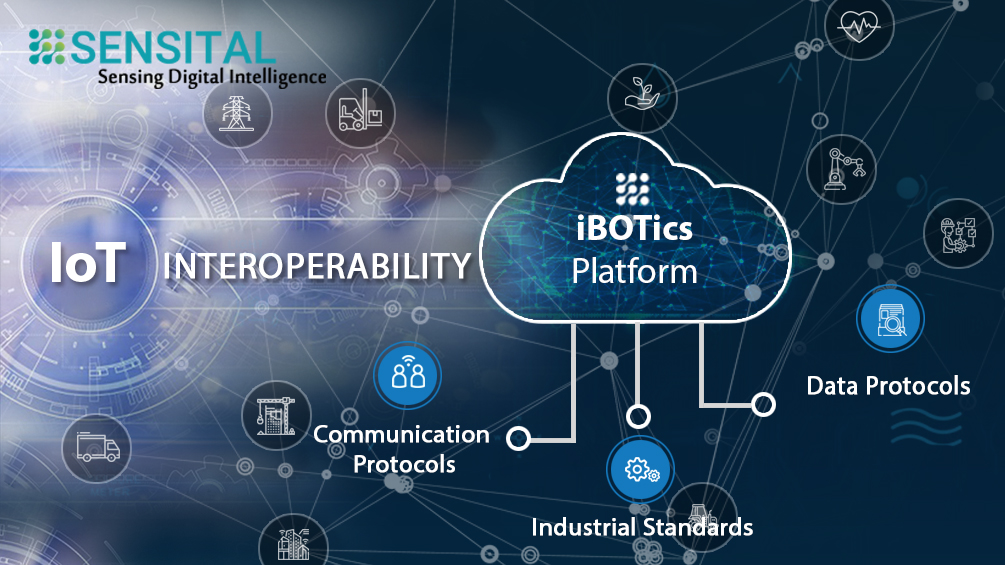
In one of my previous blogs, I talked about how and why an IoT Platform is an important component of an IoT reference architecture. One of the key values an IoT Platform brings is managing information flow between all the various devices and sensors in that IoT ecosystem by enabling interoperability. While we haven’t really matched the hype of IoT just yet, there has still been a tremendous growth in the IoT world with a myriad of devices and sensors being deployed and new ones being manufactured every year. These “things”, built for industrial or civic uses, have been designed with proprietary specifications, supporting different protocols and formats. In many ways, as IoT becomes successful and as more devices and sensors come online every day, the complexity of and need for interoperability only grows.
The basic IoT Interoperability problem
Interoperability in IoT is a multi-dimensional problem. Even within a single industry vertical we have to deal with a variety of standards and protocols. Some such standards and protocols are
Communication protocols, that dictate how two things communicate with each other. Zigbee, SIGFOX, IEEE2030, etc. and bunch of other industrial protocols like Modbus, Profibus, OPC/UA, etc. are some of the communication protocols that are followed across industries today for machine-to-machine or machine-to-enterprise systems
Data standards and protocols, that define how relevant data is canonically represented and exchanged between different devices, sensors or systems. MQTT, AMQP, TCP and REST are some of the data exchange standards that are followed in the IoT world today. Also, the data being exchanged could be represented in different formats such as XML, JSON, String or could even be binary or hexadecimal notations using either a standard or proprietary structures, further adding to the complexities of managing interoperability.
Security standards, to secure the communication and information being exchanged. OTrP and X.509 are some of the security standards deployed across IoT use-cases, over and above the standard cyber security protocols and frameworks. Besides, the enterprise IoT solutions are required to seamlessly percolate security across the different IoT layers starting from devices all the way to the integrating enterprise applications, on the other end. These security protocols usually vary across different layers of the entire IoT solution.
Other industry specific standards that may be a combination of specific data, communication, security or other standards extended to support that particular industry also exist. For example, there are set of IEEE or ISO standards for Energy & Utilities Industry different from those for the manufacturing or healthcare Industry, even though the use cases may be very similar. Asset tracking in manufacturing (for monitoring overhead cranes or trucks) may deploy different standards than those followed for monitoring the grid assets in the energy sector.
Different device, gateway and sensor manufacturers support different standards. So within each layer of IoT (network, devices, data, security, etc.) in any IoT solution, there could be a number of standards that have to be managed. For example, within Manufacturing and further zooming into just the shop floor, there are standards that are supported by PLCs running robotic cells which may be different from those supported by sensors on actuators for rolling mills or those supported by sensors monitoring the assembly line. So, now just inside the shop floor, an IoT enabled manufacturing process must broker between different communication standards, different data standards, etc. to build a comprehensive and true Digital Twin.
The not-so-basic IoT Interoperability problem
If you think interoperability within any end-to-end operational process is complex, imagine what we are dealing with when it comes to IoT implementations in Smart Cities or the Mining industry where multiple industry specific use-cases come into play – with the need for smart energy management, transportation, asset management, security, etc. all come together. We’re talking about taking the problem of brokering complex standards & protocols across industry verticals to enable the new age transformational solutions that were initially constrained only within their own siloes.
Out-of-the-box Framework for Interoperability
This not-so-basic IoT Interoperability problem is exactly what Sensital has successfully tackled with its iBOTics IoT platform by providing simple template-based configurations to handle all the above-mentioned aspects of interoperability. With its decoupled, microservices based architecture combined with its unique device management layer, the iBOTics platform allows you to easily onboard any device or sensor under its management. These devices or sensors can be configured with the right connectivity settings, security configurations, additional operational parameters, and templates to handle the data standards and protocols from its list of pre-defined specifications. Furthermore, you can easily plug any proprietary specification of any commercially available off-the-shelf device.
To learn more about how Sensital supports IoT interoperability, or to see the platform in action, please reach out and schedule a technical deep-dive or a product demonstration.
